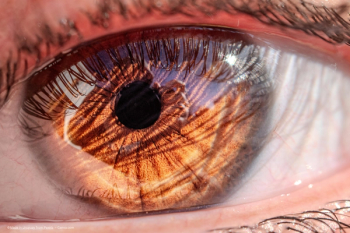
Glaucoma 2007
A look back at what has happened in the field of glaucoma in 2007 and what we can look forward to in 2008.
2007 has been a year of unprecedented interest in glaucoma surgery from both doctors and industry. "We have seen a significant surge in the interest in glaucoma surgery, as evidenced by the introduction of newer techniques," remarked Tarek Shaarawy, MD. "For example, more traditional glaucoma surgery methods have witnessed a revamp with new ideas injected into them to make them safer," he said. "In particular, I am referring to the high level of interest in glaucoma surgical trials, devices, new methods and innovative approaches regarding the combination of good engineering and creative thinking into finding new ideas or new directions towards managing glaucoma surgery," Dr Shaarawy added.
For example, trabeculectomy, which has been around since the 1960''s, has witnessed some dramatic improvements. "This traditional technique has continued to evolve, making it a much safer approach compared with the technique that was practised just ten years ago," remarked Dr Shaarawy. "Furthermore, non-penetrating surgery has been refined, making it easier to learn."
Click on any of the links below to skip forward to a particular section or keep reading below
Taking the less invasive route
The evolution of new non-penetrating surgical techniques has been an important development for glaucoma specialists. The progression of viscocanalostomy into canaloplasty has meant that surgeons are now able to act on the full 360º of Schlemm's canal, as opposed to less than 180º.
Dr Shaaraway cautions that, despite increasing interest in this procedure and some promising results, there is still little evidence to suggest that it offers superior results to the more traditional methods of surgery, such as trabeculectomy. However, it is true to say that alternative types of non-penetrating surgical techniques have become increasingly popular. These techniques alter the eye's drainage channels, thus improving the flow of fluids with only minimal penetration into the eye, resulting in, according to its proponents, fewer complications and faster recovery times.
Deep sclerectomy, in particular, is growing in popularity amongst surgeons as the evidence seems to suggest that it is safer than trabeculectomy. However, once the outflow of fluid is established through a deep sclerectomy, the challenge is to maintain a channel for the fluid to follow in order to access the normal vascular system. In this regard, there is a growing body of evidence to suggest that the use of implants can improve results by maintaining the channel until the eye has healed.
André Mermoud, MD is excited by the possibilities of this type of implant and talks about one of the newest on the market. "The new collagen device produced by OculusGen is interesting. The implant is supposed to reduce the scarring response in the subconjunctival space and it may also be used in the intrascleral space following deep sclerectomy." The porous structure of the implant guides fibroblasts to grow randomly during the wound healing process which, in addition to reducing scar formation, also helps to avoid further inflammation. It is thought that it may increase success rates by reducing intraocular pressure (IOP) and averting mitomycin-C induced complications, however the product is still fairly new to the market an we are awaiting longer-term data regarding its efficacy.
"This [deep sclerectomy with a collagen implant]
represents the gold standard surgery
for me because it is very safe and efficacious,
providing low postoperative IOP
and few complications"
So what techniques are surgeons using most frequently? Dr Mermoud and Dr Shaarawy both opt for deep sclerectomies with a collagen implant as their procedure of choice. "This represents the gold standard surgery for me because it is very safe and efficacious, providing low postoperative IOP and few complications. For difficult cases and combined surgery we use partial deep sclerectomy with the Ex-PRESS tube, a safe and quick surgery that offers positive results," explains Dr Mermoud.
Newsletter
Get the essential updates shaping the future of pharma manufacturing and compliance—subscribe today to Pharmaceutical Technology and never miss a breakthrough.












































